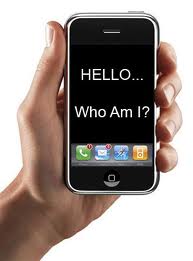 Back in the days it all seemed very easy. By identifying where people were in the purchase funnel (awareness, familiarity, consideration, purchase and loyalty), marketers were able to identify cool, warm and hot prospects and lead them down the funnel to the sale. Clear step by step customer acquisition journey that made sense. A basic marketing rule that has been respected for decades.
Back in the days it all seemed very easy. By identifying where people were in the purchase funnel (awareness, familiarity, consideration, purchase and loyalty), marketers were able to identify cool, warm and hot prospects and lead them down the funnel to the sale. Clear step by step customer acquisition journey that made sense. A basic marketing rule that has been respected for decades.
But let’s face it: the world we knew back then has changed. With the exponential growth in technology, mobiles, Internet, social media and search, even the way we look at the world has changed. We marketers have changed, consumers have changed and the ways brands engage with the consumers have changed.
So why the way consumers buy our products would not have changed?
Different consumer decision journey
According to consulting firm McKinsey, traditional funnel is dead and has been replaced with a different model called Consumer Decision Journey.
“It’s taking a fundamentally different view of what’s going on in consumer behavior”, claims David Edelman, partner and co-leader of McKinsey’s global digital marketing strategy, “What we have seen in sector after sector is that this [funnel] is not what’s going on; we need to reframe the consumer decision journey to something more iterative, circular and more about what the consumer is actually doing. And marketing needs to be about helping customers through that journey.”
Social media, consumer forums and brand advocates play a very important role in this purchase process model. Consumer tries or buys a product, tells the world about it, and triggers other consumers interests who will then evaluate different options on and offline and compare brands before buying the product.
What is interesting in this model is that since consumers are constantly evaluating different possibilities, they are in a continuous journey where they regularly add and drop brands. It is a loop, which means that the communication should not only focus on awareness and end sale, but also in consumer engagement and consumer loyalty. More happy customers the brand has, more advocates, positive comments and evaluations it has. Which then lead to more potential customers.
How to engage with the customers during their journey?
McKinsey has identified four ways companies could use to engage consumers during their journey:
- Align – instead of using all resources for “consider” and “buy” stages, companies need also to focus on “advocate” and “evaluate” stages. This means that marketers need to stop ignoring consumer forums and encourage clients to rate their product/service or write their opinion about it. Amazon is a great example of the power consumer opinions and data brings.
- Link – Communication and brand message across all channels from offline to online needs to be consistent. If the core message and brand identity differs, consumers get confused. And confused customers are not happy customers.
- Lock – Companies should “lock in” a customer’s attention via direct, opt-in channels, such as Twitter, Facebook, email and apps. It does not mean sales talk, people who follow you are usually your fans and deserve interesting and relevant content. Other consumers following you are all potential customers who also deserve engaging content that does not only push sales, but asks their opinion and makes them feel special at every stage of their journey.
- Loop – As mentioned, the journey is a loop. To improve the loop it is very important to measure data and evaluate the response to the content. If you do not know the results, how can you improve your marketing strategy and communication?
Is traditional purchase funnel dead?
Dead is a strong word. I think the consumer purchase journey has only transformed and become more advanced and adapted to the modern times. The basics steps are similar, but the model highlights the importance brand advocacy has especially on these disloyal times. We are surrounded by excessive choice, have become suspicious and picky, and search for other consumers advice before choosing the right product for us.
Word of mouth and post-purchase customer service have always been important, but often forgotten from the marketing mix. Yet the truth is that ever since consumer was able to speak with the world via Internet and reach not only his family but hundreds of thousands of people, his power has skyrocketed. It would be foolish to ignore it.
Whether you call it customer decision journey or purchase “loop”, this model should be an eye opener for those who stick to the old world and the old models. The world has changed. Welcome to 2012.








An excellent article Pauliina
Most have yet to realised that this revolution really is just that: a revolution. It’s not going to go away and it’s not even out of first gear.
This accords with and confirms our own independent research over the last year (to be published soon). One of our main conclusions is that marketing and sales now needs to be a circular (or better yet spiral) process – not a traditional linear one based on find-sell-move-on – but based on advocacy and goodwill.
Goodwill is an old fashioned word for a cluster of things we try to achieve via social including: satisfaction, relationship-building, listening & responding and yes, advocacy. In other word vendors building a real relationship with consumers rather than a ‘what we can get away with’ approach.
As you rightly say “the world has changed”. 2012 will see that start to dawn on many of those wedded – consciously or otherwise – to older ways.